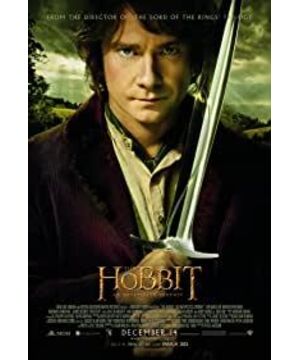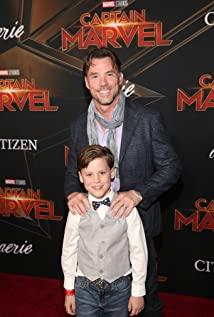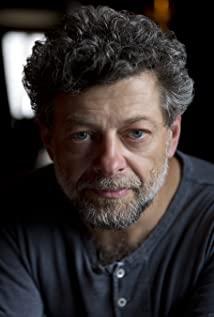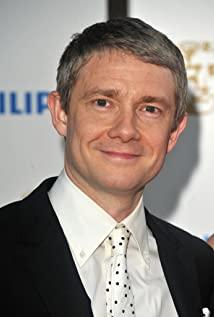When I was a child watching movies, I could vaguely feel an indescribable phenomenon: when the characters on the screen move too fast, they will appear incoherent and even have a sense of jumping. I learned from the book that this is called "persistence of vision". I take 24 photos per second and put them together. This is how the movie becomes active.
The movie got its name from motion picture.
The old movies have a more jumping sense and come with some comics. Later, I learned the principles of film and knew that it was the shooting standard at the time (in fact, I wanted to save film). I was reluctant to shoot 24 shots per second. I took 16 or 12 shots and then projected them at a regular speed. Doing fast movements like a clockwork, it looks funny.
Later, I studied movies in depth for a few years and learned that this sense of jumping is the texture of time. Once this feature is too far apart from life experience, it will make viewers feel "awkward". If you feel awkward and comfortable and feel funny and relaxed, you are watching Chaplin; if you feel awkward and uncomfortable, then you must be watching HFR3D's "The Hobbit".
For a long time, the 24 frames per second time texture of film cinema cameras and projectors has been the holy grail pursued by many young directors who cannot afford film, and it is also an important sensory basis for film technicians to distinguish between "TV series" and "movie". one.
Nowadays, digital images have almost replaced film chemical processing, and "24fps" is no longer exclusive to movies. This kind of "movie sense" appeared in well-made American dramas with digital high-definition cameras, and when the nouveau riche of the neighbors could carry Canon 5DII and Lycra lenses and shoot literary and fresh "micro movies", we were amazed. .
Even so, 24fps is still a unique beauty of movies. During the screening, the faint jitter caused by the perforations of the 35mm film, and the breakpoints in the film change between copy and copy, are memories that accompany the birth and growth of the film.
The law, which is as constant as gravity, is finally facing a challenge. Fully double the number of challenges.
I thought that going to the cinema twice to watch the same movie in a short period of time would hardly have any different feelings. But from the moment I saw the first shot of the film after I was seated, the candle that Bilbo lit was clearly right in front of my eyes, and the mouth shape of every line was like a real person performing in front of me. This is an immersive movie-watching experience like never before. The immersion is even a little strange.
If you are a fan of Tolkien, Middle-earth, and "Lord of the Rings", then "The Hobbit: An Unexpected Journey" will blow your blood. Even if you don’t understand the original work and Tolkien’s overhead world at all, or you think that Harry Potter is more profound than the ideological realm of The Lord of the Rings, but as long as you know how to appreciate the charm of the movie, then The Hobbit is also It's a great masterpiece, and it's worth seeing.
This is a work full of sincerity to the audience. What's more rare is that it is full of unexpected surprises.
For example, 48fps.
A year ago, I learned that Peter Jackson would regain the guide tube of "The Hobbit" and take over the mess left by Guillermo del Toro and MGM. I was so excited that I couldn't calm down for a while. It is not only the expectation of Peter Jackson, but also the worry and relief of Guillermo de Toro's smashing the sign. It is also a ten-year wait, and finally there is hope.
From the point of view of film production, such a big hole, and it is a big hole in the series, it must be that no one wants to jump. De Toro retired when he knew it was difficult, and he was relieved. Instead of ruining the hearts and minds of millions of fans, it is better to take a step back and take a picture of his favorite "Hellboy 3".
Unlike the "Star Wars" series, at the end of the 1990s, George Lucas, who started filming "Star Wars Prequel" after a lapse of decades, fans' expectations have been cultivated generation after generation over the years. Even Peter Jackson himself, when making the preface for the album behind the scenes of Star Wars, used tearful pen to mention the almost crazy excitement when he saw the first scene of "Star Wars" when he was a child.
The "The Hobbit" and "Lord of the Rings" series have been published for more than half a century. Before the "Lord of the Rings" movie trilogy came out, the readership of its novels was already quite large, not to mention the new wave of enthusiasm after the movie trilogy reached its peak, so that all fans are holding a copy of "The Hobbit". "I was imagining, what would it look like if it were made into a movie?
This is the biggest challenge a film director can face: the audience only expects how well your film is made. Just look forward to the movie. We all know the story. Just wait to see how you tell the story.
Unfortunately, "The Hobbit: An Unexpected Journey" did not reach its peak like "Lord of the Rings". After all, the volumes of the two original works are different. Peter Jackson has done his best to make "The Hobbit" less like a children's bedtime literary book, but more like a predecessor that seamlessly integrates with the "Lord of the Rings" trilogy movie.
Perhaps the "Lord of the Rings" movie trilogy is eligible to be included in the list of the greatest movies of mankind along with the popular "Life of Pi" that digs three feet to dissect humanity. But "The Hobbit" can't. The only thing that can make it famous is 48fps, which is a technological first.
There have been many film reviews on "The Hobbit" as a die-hard fan. I am also an old fan myself. Over the past ten years, I have read a few original books that I can get, and learned some Quenya's fur. The "Lord of the Rings" series has been pulled many times, and the commentary soundtrack and behind-the-scenes production of the DVD After repeated observations, I did not miss the "Lord of the Rings" marathon at the film festival. It can be said that it was the "Lord of the Rings" series that made me make up my mind to take film as the industry I pursued and the ideal I pursued.
But if you leave the context of a fan and talk about "The Hobbit" from the perspective of simply appreciating a film, then the most commendable thing about this film is probably not its storyline, directorial techniques, and lens language, but The forward-looking nature of 48fps.
Since the day the film was born, whenever a new "technology" is introduced into the film, it has almost met resistance. Whether it is sound film to silent film, color film to black-and-white film, surround sound to mono, digital projection to film projection, or stereoscopic film to traditional non-stereoscopic film, they all have gone through hardships in the war of words. There has never been a lack of filmmakers who insist that they don’t touch new technologies to keep their season late. Now, the traditional "24 frames per second" rule (even the aesthetic ruler of movies) has finally come to the forefront of controversy. And when the costume makeup, setting props, visual effects, and even the performance of the actors did not have time to catch up with the pace of 48fps, "The Hobbit" took its own first experiment.
People who have watched the HFR3D show will have the same feeling, that is, the amount of visual information has doubled; there is almost no Motion Blur (motion blur) that can be detected by the naked eye; The spatial reproduction is in place; for 3D stereoscopic movies, it solves the discomfort of the eyes and makes it easier to locate the sense of depth. Someday in the future, these characteristics will become the basic requirements for a movie to let the audience "enter into the play".
From 24 to 48, the distance is a mere double. In contrast, the workload of film creators has more than doubled. For example, visual effects, the art of deceiving the audience's eyes, often use optical defects in film shooting (such as shutter speed, sensitivity latitude, depth of field, etc., film grain, etc.) to enhance the sense of visual reality. For a 24fps special effects picture, it is not difficult to make a high-speed motion and detailed special effects picture. On the contrary, a relatively static close-up shot is more likely to reveal itself. One of the reasons is Motion Blur. This blurring phenomenon produced by the camera's shutter speed greatly leaves the audience's eyes with the details of the picture. 48fps pushes the film to the sense of reality of live performance of the drama, and the requirements for the quality of the crew have also been pushed to the peak. I can clearly identify the old and new worn details of the gray robe fabric on the running Gandalf in a 48fps screening on a non-IMAX screen, which may not be possible in a 24fps IMAX screening.
If you can appreciate the brand-new feelings brought about by this subdivision in the time dimension, then Peter Jackson's technical promotion has not been in vain.
Perhaps for an ordinary audience who spends money on tickets (and drink popcorn) to bring friends into the cinema to kill time, choosing "The Hobbit: An Unexpected Journey" may not be as worthwhile to watch a star-studded comedy. . After all, without considering the cultivation of watching movies, endure 2 hours and 49 minutes to finish watching a (adapted from a novel written by a linguist/writer) a group of unshaven men "run → chase → fight → run → chase → The epic special effects blockbuster with a magical theme is really sleepy.
In the eyes of such a common "audience", "The Hobbit" does not have the courage of "Super Battleship" or Michael Bay's "Transformers 3" that raises the audience's audiovisual threshold several times. In terms of plot, the complex cultural background and language barriers are far less accessible than the value-output "Avengers". Speaking of 3D (actually refers to three-dimensional movies), there are IMAX, giant screens everywhere, and even the "Chinese giant screen" shining with national pride. Wearing 3D glasses to watch a movie is too dizzy. The visual effects and the 48fps experience of HFR3D are even less important for people who only switch from pop-up ads to video sites to watch movies. Moreover, in the short term, the mainland may not be able to get along with HFR.
It may not be possible to see the difference because of fate. When playing CS, the FPS is higher than 48, and it is not that some people still vomit when playing.
Each audience's viewing experience is different, which is the cornerstone of the existence of film as an art for a century. If everyone feels the same about the same movie, then the movie is probably a shouting microphone used to "propaganda", rather than being worthy of being called art.
There are popcorn-flavored commercial films in the world, and there are also pure art films; there are realist humanistic care, and expressionist imagination; of course, there are also large-scale productions by rich, stupid, upstarts.
Fortunately, "The Hobbit: An Unexpected Journey" did not disappoint me at all, and I am worthy of the expectations of ten years.
View more about The Hobbit: An Unexpected Journey reviews











